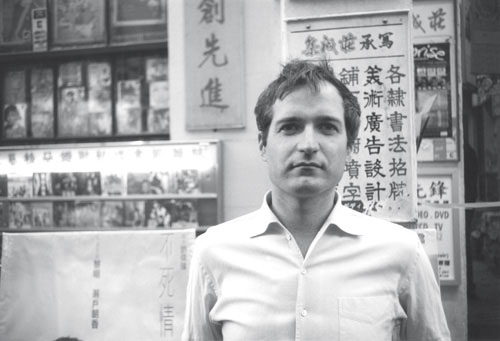Just have the balls to say ‘no’
Production-led or ideas-driven? If you’re honest enough to stick to one side of this fault line, clients will flock to your door. Know thyself, says Simon Myers

The issue is not the ambition itself, which is laudable, it is the worrying lack of self-awareness – and the slight air of desperation that often accompanies such statements – that grates.
It is, I believe, born out of a fundamental insecurity relating to the enormous social and technological trends that are shaping not only our industry, but our relationship with clients, too.
Perhaps this is not totally surprising, when the marketing and design services industry is undergoing its most profound change in more than 40 years. The tried and tested methods of ‘big bang’ identity changes, lavish television advertising campaigns and expensive print-related activity are all under threat. When a ground-breaking idea can come from anywhere, and a 15-year-old nephew in Sri Lanka can knock up a great website at the drop of a hat, what is the right response to this situation?
First, you should accept the reality of the clear polarisation – driven by clients – that is forcing design consultancies to respond. The big question is, ‘Is your creative business production-led or ideas-led?’.
This is the new fault line in the creative world, but don’t worry – there is no right or wrong side. There is room for those on both sides to prosper.
I know many successful production-led consultancies and some successful ideas consultancies. But only the managers willing to be absolutely honest about which business they are in will prosper in this new landscape.
On one side, it is all about low margins, but massive scale. On the other, it is about high margins, but staying small enough to deliver a quality response.
In one of these worlds, it is about process, process, process and cutting costs wherever they can be identified – even if this means relocating people to far-off places. In the other, it is about people, people, people and organisational health.
In one world, the studio needs set the tone. In the other, it is set by the ability to solve other people’s problems.
Both are valid. Both hold risks and rewards.
In one, continual price pressure and the democratisation of technology and skills pose a huge challenge to London-based creative consultancies. The large design groups are now investing heavily in India as a response.
In the other world, rising wage bills for articulate and talented people, getting the right culture and pro-active people management play a time-consuming – but critical – role in success or failure.
The challenge to all creative consultancy management is to work out which camp they are in, and embrace it.
This honesty and clarity about the nature of a business is difficult to achieve. It comes down to the personality and passions of the senior people in the team.
Being honest about who we are as individuals is the toughest thing to do, primarily because we rarely have to. The last time most people’s personalities were challenged was in their school report.
Some of the most delusional conversations are often with large ad agencies which claim ‘strategic oversight’ of a client’s business, but make all their profit from marking up expensive above-the-line campaigns.
Or with graphic identity groups which claim to be ‘strategic communicators’, but never say ‘no’ to an annual report.
And there’s the rub. Having the courage to say no to projects that are not core is key to creative managerial happiness, even if it keeps you up at night wondering how the bills are going to get paid.
We have turned down a lot of work (as well as doing things we shouldn’t, in hindsight, have done), but over the three-and-a-half years that we have been going, we have never regretted it. We have grown from two people to 22 in less than four years, with an expected turnover this year of £2.5m.
Sitting in the middle of the road is a dangerous place to be – much better to move to one side or the other, as we often tell our clients.
Simon Myers is managing director of Figtree
FOOD FOR THOUGHT
• Is your group production-led or ideas-led, and is that what you want it to be?
• The production-led business model tends to rely on a volume and value approach
• The ideas model for a high-margin consultancy relies more on staying smaller to deliver bespoke projects and provide personalised insight
• Do you have the courage to say ‘no’ to projects that are not core?
-
Post a comment




